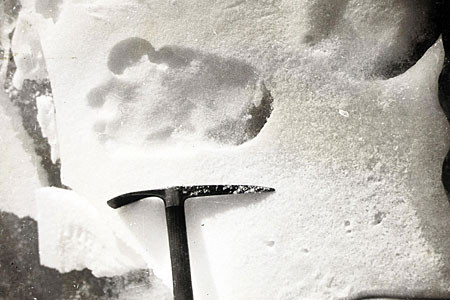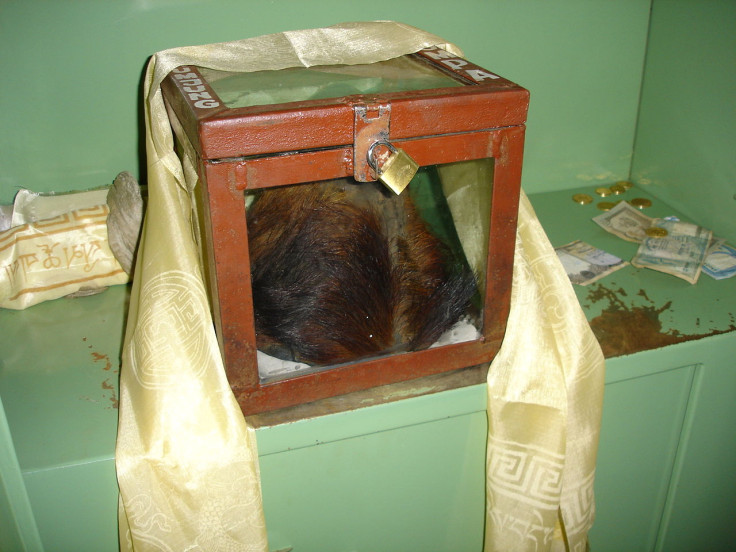'Yeti' Photos Expected to Fetch £5,000 at Christie's Auction
Photographs taken by a Himalayan explorer of a 'yeti' footprint, could be sold for thousands of pounds at auction next month

Photographs taken by a Himalayan explorer of a 'yeti's' footprint, could be sold for thousands of pounds at auction next month.
The four pictures were taken by Eric Shipton, a British climber in 1951 and apparently show a 13in-long footprint in the snow.
Shipton always claimed the photos were authentic. However, many have accused the mountaineer of faking the images. Nevertheless, in the hunt for the so-called Abominable Snowman, these prints are thought to be the best proof of the elusive creature's existence.
On 9 November 1951, Shipton and fellow climber Michael Ward were on the Menlunq Glacier at an altitude of 18,000 feet (5,500m).
Footprints in ice
As they returned to camp, the two men came across a one-mile (1.6 km) long trail of footprints. Shipton took photos of the clearest print. He used an ice axe for scale. The print was 13 inches (33 cm) wide.
The photographs for sale at auction are the original prints made by Shipton when he returned.
On the back of one photo, fellow climber Tom Bourdillon writes of the footprints: "They seemed to have come over a secondary pass at about 19,500ft, down to 19,000ft where we first saw them, and then went on down the glacier.
"We followed them for the better part of a mile. What it is, I don't know, but I am quite clear that it is no animal known to live in the Himalaya, and that it is big."
James Hyslop from Christie's online auction told the Times: "The photographs are the earliest documentation of the famous yeti and the pictures made all of the headlines in the 1950s. They were the first real evidence that the yeti could be real."
Shipton was a distinguished and experienced climber who was awarded a CBE for contribution to the conquest of Everest in 1957.

Audrey Salkeld, a mountaineering writer, uncovered two practical jokes perpetrated by Shipton. According to a report in the Fortean Times, after the 1938 Everest expedition, Shipton claimed that team geologist Noel Odell was affected by oxygen deprivation and tried to eat some rocks (thinking they were sandwiches). Odell told Salkeld it was "complete nonsense."
Shipton also told another story about finding the body of Maurice Wilson (an unsuccessful Everest solo climber) in 1935. Shipton claimed he found a bizarre sexual fetish diary and women's clothing with the body.
Dr Charles Warren found the body with Shipton and told Salkeld the story was untrue.
Watch the video on searching for the Abominable Snowman
The yeti or, Abominable Snowman, or in Nepali "mountain man", is an ape-like creature, taller than an average human, that is said to inhabit the Himalayan region of Nepal and Tibet.
The names 'yeti' and 'meh-teh' are commonly used by the people indigenous to the region, and are part of their history and mythology.
The scientific community regards the yeti as a legend, given the lack of conclusive evidence.
Analysis of samples associated with claimed yetis found a sequence of mitochondrial DNA that matched a sample from an ancient polar bear jawbone found in Norway, that dates back to between 40,000 and 120,000 years ago.
© Copyright IBTimes 2025. All rights reserved.





















